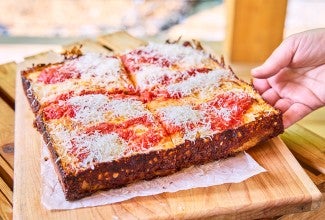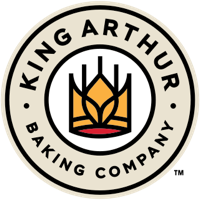Why I love my Gozney pizza oven — and how to use it
The tool you need for professional pizza at home.
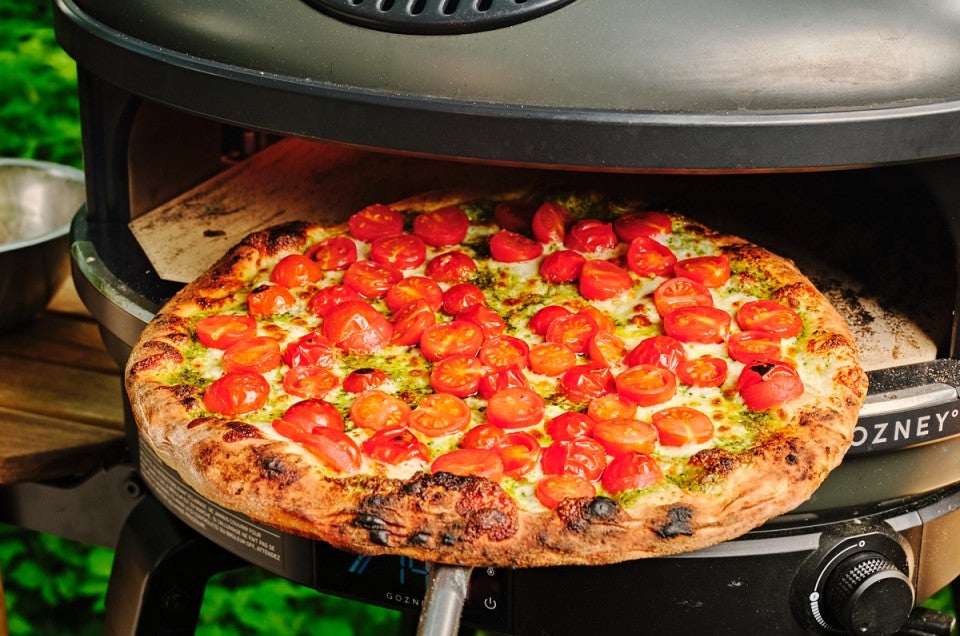

In the past 12 months I’ve made more pizzas than in any year of my life. From crispy tavern-style pies to thin Roman slices, it’s been a steady march of slices as my colleagues and I bake up a new cookbook all about pizza (served hot in April of 2026!).
While our recipes can be baked in home ovens, I’ve also been testing them in my Gozney Arc Pizza Oven. And from large NY-style slices with “no-dip tips” to my sourdough Detroit-style pies, my pizzas have never been better. Let’s talk about why the Gozney is so good.
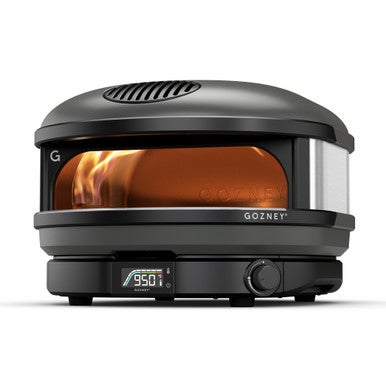
Ten years ago, when I wanted to make professional-quality pizza at home, the only option was to build a masonry oven the size (and cost) of a small car. But today, small-footprint tabletop ovens bring the power of great pizza to the people. Do you want professional results on a personal scale? A tabletop oven is the tool you need.
So why do they make such great pizza?
While home oven temperatures work for breads, cakes, and cookies, pizza is better — it's crispier, has more charred spots, and gets a more open structure and craveable cornicione — when baked at higher temperatures.
How much higher? A lot. The lowest setting that I use in my gas-fired Gozney Arc is around 650°F (for my pan pizzas like a Grandma or Detroit-style). That's 100°F to 150°F hotter than the maximum setting on my home oven. When the pan hits the hot masonry hearth, the dough quickly expands and the oil in the pan superheats in a way that’s simply not possible in the home oven, resulting in a pizza that is simultaneously light and crisp.
And the heat doesn’t stop at 650°F. At our recent pizza book photo shoot, I baked my Neapolitan-style pizzas at over 800°F. In that range, the dough puffs and blisters in under two minutes, just like in a professional wood-fired oven.
But because the Gozney is much smaller than a wood-fired oven (and uses propane as its heat source), the oven reaches temperature in 30 minutes or less, rather than taking hours or even overnight to heat.

Speaking of heat, my favorite aspect of the Gozney design is the gas burner placement. It curls from left to right along the side of the oven, so I can watch my pizzas bake in real time — an essential benefit when working at high temperatures. When I can see what’s happening — with the flame and my pizza in view — I can monitor and adjust more easily. Whether it’s rotating the pizza or lowering the heat, if I see something I can do something.
And, most importantly, I can do something quickly. With its LED temperature readout and accessible gas dial, the Gozney gives me the flexibility to make adjustments on the fly. Need a little extra heat at the end of a bake? Turn up the dial. Toppings coloring too quickly? Simply turn it down. All the control you need is at your fingertips.
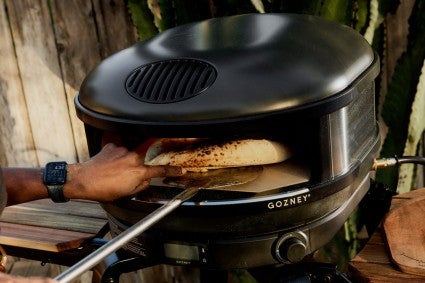
In case I’ve made this sound like an Easy-Bake Oven tutorial, I should also tell you that all tabletop ovens have a learning curve. With high heat, things happen quickly. Start too hot and the balance will quickly shift from crisp to carbon. Here are some tips for success.
Preheat properly: Before you start throwing pizzas into the oven, give it ample time to preheat. A masonry hearth, fully soaked with heat, will produce a better crust, enabling the top and bottom to bake at equal rates. How do I know I haven’t preheated enough? My pizza will have a pale undercarriage even if the crust and toppings are deeply browned. For even baking, don’t shortchange the preheat!
Chill out: While running the oven as hot as possible seems fun (and can produce great results), I don't recommend cooking everything at 900°F. For best results, think of the heat in zones — low (550°F to 650°F), medium (650°F to 750°F), and high (750°F to 850°F) — and spend most of your time at medium. In the high zone, the risk is greater than the reward. The Gozney’s well-placed temperature readout makes it easy to tell you where you are. Figure out the “Goldilocks zone” for your pizza skills and preferences and stick to that. As you get more comfortable with your oven, you can see how you like the high zone.
Dial it in: After loading, I often use the Gozney dial to reduce the heat while the bottom crust sets. Once set, I rotate the pizza and dial the flame back up, using the curling heat to give just enough (but not too much!) color to the toppings.
Turn, don't burn: Once you load, stay at the oven, watching, turning, and adjusting. My preference for rotating is the small Gozney turning peel. It's heavy, well-constructed, and just big enough to use for unloading as well.
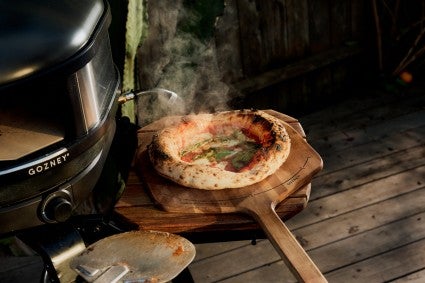
And lastly, in case you feel like you’re the only pizza fanatic in the house (though I’m not sure how that could be possible since it’s the most popular food in the world), be assured that this oven is not a single-use appliance; I use it for everything from bagels to pita and even fish, chicken, or vegetables, especially when the summer temperatures climb and it’s too hot to cook inside. While the oven preheats, I do my preparation and then use the high heat to get a meal on the table in literally minutes.
If you’re looking for a way to take your pizza to the next level, the Gozney Arc Pizza Oven is the tool you need. I’m not getting rid of my (indoor) home oven anytime soon, but when it comes to making my best pizza, this is the oven I love the most. And if you’re looking for more tips on the Gozney or want to see it in action, check out this video:
Cover photo by Andrew Thomas Lee, food styling by Yekaterina Boytsova.
